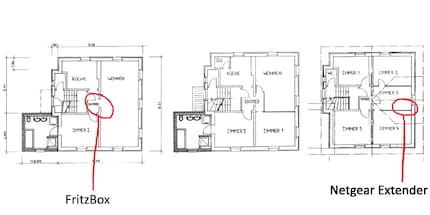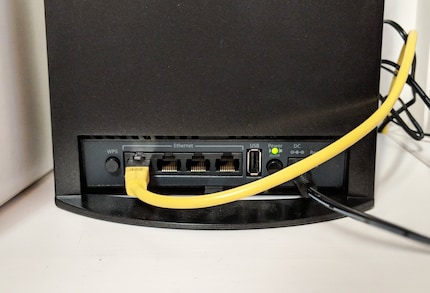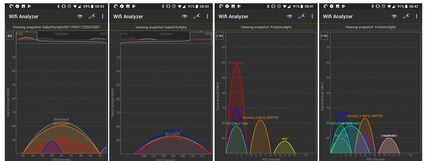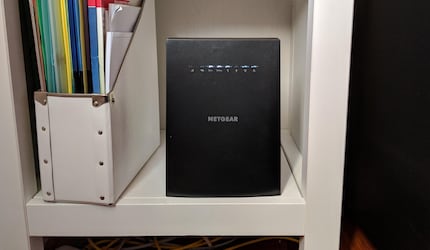

Netgear EX8000: if only it were that easy to have stable wifi at home...
How do you get a fast, stable connection in a multi-storey house without having to redo the whole installation? Interoperable wifi repeaters like the Netgear EX8000 would seem to be the solution to all our problems. They really are - when they work.
Of course, in our home, all the conditions are in place for good Internet coverage. All three floors are gigabit wired. So no problem for PCs. For mobile devices, it's a different story... The router is in a cupboard in the stairwell on the ground floor. This level is well covered. On the floor above, the connection is already much weaker and in the bedroom, the tablet gets no reception. On the top floor, there's nothing to look forward to outside the corridor.
Small explanation
Repeater
Repeaters normally communicate on the same band (Dual-band, 2.4Ghz or 5Ghz). They pick up the wifi signal and retransmit it, where the bandwidth is split in two.
Network mesh
The concept of a mesh network is rather vague. The ideal mesh network consists of several tri-band devices. It therefore has a dedicated connection (backline) to the router. The other bands are then free to communicate with the clients. The devices must therefore not exchange in both directions on a single band, at the risk of affecting performance.
Andres Weber, Category Sourcing Specialist and my personal adviser on network issues, recommended the Netgear EX8000 Nighthawk X6S. It is compatible with devices from other brands and can be used as a wifi repeater, as well as an access point (LAN).
Tip: Asus has patched the firmware of various older routers so that they can be used in a mesh network. However, there's only one tri-band router, which doesn't halve performance, among the compatible routers.
Setting up is like playing the lotto
My conclusion: when it works, everything works
As a child, I wasn't allowed to have any consoles. It was only with the arrival of the family's 486 PC that the magical world of gaming opened up to me. Today, I'm overcompensating accordingly. Only a lack of time and money prevents me from trying out every game there is and decorating my shelf with rare retro consoles.




